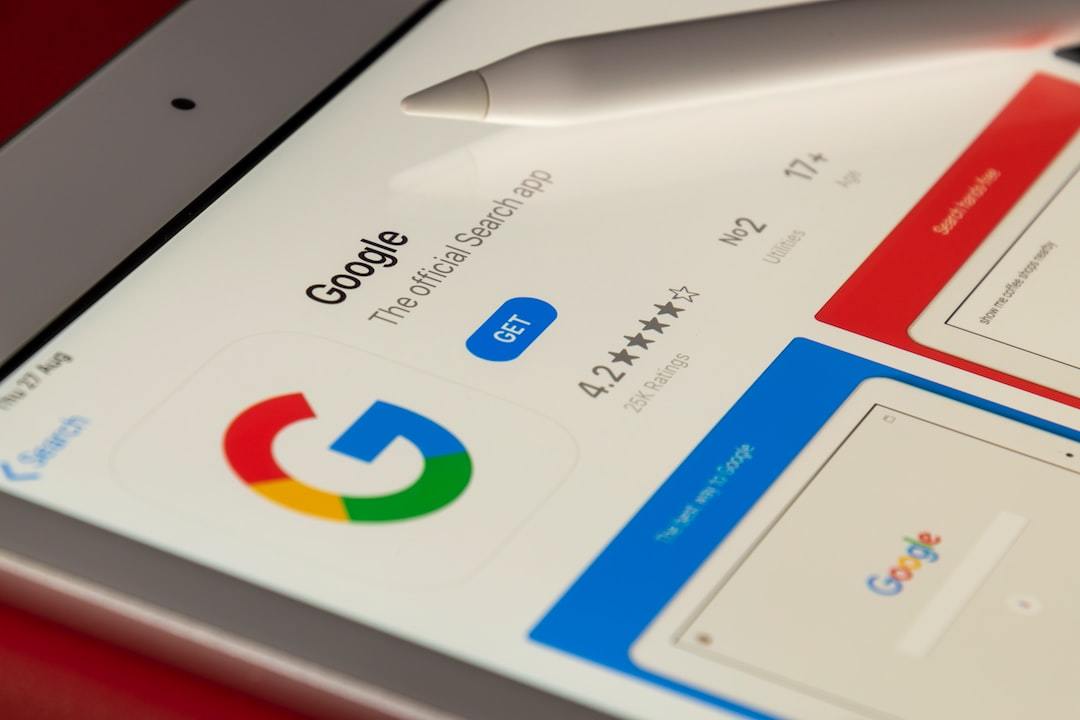SearchEye Launches Pro Membership
Flat Price Mentions, Digital PR, Exclusive Opportunities, access to 5,000+ opportunities.

H1 Tag Optimization is a crucial aspect of on-page SEO that often goes overlooked. In this guide, we’ll explore how to leverage H1 tags for improved SEO performance, from keyword placement to user engagement, and beyond. With SearchEye.io, you can take these strategies to the next level with our link-building and Digital PR platform.
From enhancing user engagement to strategically placing target keywords, you’ll learn how to optimize your content for both search engines and readers alike. As Chris Porteous once said, “Optimization and user engagement go hand in hand. Each one influences the other in ways that directly impact your site’s visibility.” We will also discuss best practices for organizing content with header tags and effective whitespace utilization – all tools at your disposal with SearchEye.io.
This guide covers essential aspects like meta descriptions, title tags, and image optimization using alt attributes, and common H1 tag mistakes to avoid – such as duplicate or excessive use of H1s. Ensuring your website remains mobile-responsive, an added benefit of using SearchEye.io, is equally crucial.
By mastering these techniques in H1 Tag Optimization, you can boost your SEO success while providing an exceptional user experience for your audience. Let’s get started!
Let’s talk about the unsung heroes of SEO – H1 tags. As Chris Porteous once said, ‘Mastering H1 tags isn’t just about SEO, it’s about creating a better user experience.
These bad boys play a crucial role in search engine optimization, serving as prominent titles that describe the main topic of web content.
H1 tags contribute to improving user experience and readability, while assisting search engines in understanding the headline or title of a page through HTML markup.
H1 tags help provide semantic meaning for search engines by clearly indicating what your content is all about.
This allows crawlers to better understand and index your pages, leading to improved visibility on SERPs (search engine results pages).
A well-crafted H1 tag can also boost user engagement by capturing attention and enticing visitors to read further into your content.
In fact, Backlinko’s study on Google ranking factors reveals that higher click-through rates are associated with better rankings.
When optimizing your H1 tags, it’s important to remember a few key points:
By following these best practices for H1 tag optimization, you can improve your web design and SEO practices, leading to better keyword density and ultimately, higher rankings on SERPs (the pages that show up when you search something on a search engine like Google). So go ahead, make your main header the star of your blog post or webpage – just remember to keep it friendly, witty, and most importantly, optimized.
Let’s dive in and explore the power of on-page SEO by discussing the strategic placement of keywords within your H1 tags. This tactic of utilizing H1 tags can produce great results in terms of SERP visibility for your website.
Want to unlock your SEO potential even more? Check out our link-building and Digital PR platform at Searcheye.
First and foremost, identify relevant keywords that resonate with your audience and align with your content. You can use tools like Ahrefs’ Keyword Explorer or Google Ads Keyword Planner for this purpose. Select primary and secondary keywords based on search volume, competition level, and relevance to your topic.
Incorporate these chosen words naturally into your H1 tag without overdoing it – remember that quality trumps quantity here. Aim for a keyword density of around 0.5% to 2.5%, as excessive repetition may lead to penalties from search engines like Google.
Add variations or synonyms of the main keyword throughout other headings (H2-H6) in order to not only maintain consistency but also improve overall readability and user experience too.
Now that you’re equipped with the knowledge to optimize your H1 tags effectively, it’s time to put these strategies into action and watch your website climb up those SERPs. Remember, keyword optimization is just one piece of the puzzle – don’t forget about other crucial factors like meta descriptions, alt attributes, and user experience.
Let’s face it, nobody likes clickbait. Ensuring that your H1 tag accurately represents the main topic or purpose of each web page is crucial for user satisfaction and SEO performance.
But how can you achieve this?
The H1 tag should succinctly summarize the page’s content, providing readers with a clear understanding of what they’ll find. Crafting engaging headlines that match reader expectations will not only improve user experience but also increase organic traffic from search engines.
A high bounce rate could indicate that visitors aren’t finding what they’re looking for on your website, which might hurt your rankings in SERPs (Search Engine Results Pages). To reduce bounce rates, make sure your H1 tags are relevant and accurate representations of the content within each webpage.
Using multiple H1 tags or duplicate H1 tags can confuse search engines and hurt your SEO success. Stick to using one main H1 tag, also known as the main header, for each webpage. This HTML tag is an important tag for on-page SEO and should contain your main keyword.
Other heading types, such as H2, H3, and H4, can be used to organize your content and improve readability. However, be careful not to overuse them, as keyword stuffing and excessive use of header tags can also hurt your SEO performance.
Remember to also optimize your title tags, which are different from H1 tags but equally important for SEO. Title tags should be concise, contain your main keyword, and accurately represent the content on the page.
By following these HTML header tags and title tag best practices, you can improve your web design and SEO practices, ultimately leading to higher organic traffic and better user experience.
Get accurate content representation with the help of Searcheye’s Digital PR platform.
Let’s dive in. As a modern-day blog editor experienced with SEO, I know that creating a logical and user-friendly structure using H1 tags is essential for search engine optimization and overall success. To achieve this, it’s important to follow some best practices.
First up: subheadings. Proper use of semantic subheadings (H2-H6) is crucial for organizing your content effectively. This not only improves readability but also helps search engines understand the hierarchy of information on your page. Learn more about heading tags here.
Next, let’s talk about whitespace – an often overlooked design element that can make or break your content presentation. Utilizing whitespace effectively ensures that your webpage looks clean, uncluttered, and easy-to-read by providing visual breaks between different sections or elements within the text.
To create a compelling user experience, it is essential to arrange your content in an organized and engaging manner. Want more tips on organizing your content effectively? Check out this comprehensive guide.
To sum it up: proper use of H1 tags, subheadings, whitespace, and other formatting elements will help you present information clearly and concisely while maintaining an organized layout throughout your webpage. Avoid using multiple H1 tags or duplicate H1 tags, as this can confuse search engines and hurt your SEO. Instead, use H1 tags for your main header and incorporate other heading types (H2-H6) for subheadings. Additionally, make sure to include important tags such as title tags and meta descriptions in your HTML code. By following these on-page SEO practices, you can improve your website’s visibility and attract more traffic to your blog post or web design project.
Your readers and search engines will be appreciative of the organization you’ve provided on your webpage through proper use of H1 tags, subheadings, whitespace, and other formatting elements. Remember Chris Porteous’s words: ‘SEO is not an overnight process. It’s the consistent application of proven techniques like proper H1 tag usage that yield results.’
Key Takeaway:
Proper use of H1 tags, subheadings, whitespace and other formatting elements is essential for presenting information clearly and concisely while maintaining an organized layout throughout your webpage. Incorporating visual aids such as bullet points or numbered lists can simplify complicated topics while adding variety to your overall content layout. Remember to avoid using multiple H1 tags or duplicate H1 tags as this can confuse search engines and hurt your SEO.
While keyword optimization is crucial for H1 tags, there are other essential SEO factors to consider when crafting your content. Let me walk you through them.
#1: Meta descriptions and title tags
A well-written meta description can improve click-through rates by enticing users with a concise summary of your page’s content. Similarly, an optimized title tag helps search engines understand the topic while boosting user engagement.
#2: Image optimization with alt attributes
Incorporating relevant images enhances user experience but don’t forget to optimize them. Adding descriptive alt attributes, compressing file sizes, and using appropriate formats like JPEG or PNG will ensure faster loading times and better accessibility for all users.
Incorporating these strategies into your overall approach will ensure that you’re covering all bases, leading to improved visibility on SERPs and an enhanced user experience.
Ready? Let’s tackle those H1 tag mistakes next.
Let’s talk about some common H1 tag blunders. Avoiding missteps with your H1 tags will make sure that your content is organized correctly and optimized for search engines as well as readers. Are you ready? Let’s dive in.
| Good H1 Tag Usage | Bad H1 Tag Usage |
|---|---|
| “Ultimate Guide to Gardening” | “Home Page” |
| “10 Best SEO Practices in 2023” | “Post #12” |
First up: don’t overdo it with the H1 tags. Having multiple semantically similar headings can confuse search engines and hinder user experience. Stick to one primary heading per page, folks.
Ensuring your website is optimized for mobile use is essential in the modern era, as Google rewards sites that are user-friendly on all devices with higher rankings. Google prioritizes mobile-friendly sites in its rankings, so make sure your H1 tags are responsive across all devices.
Want more tips on optimizing your content for search engines?
Check out our comprehensive guide on H1 tag best practices here.
Now go forth, optimize those headings, and watch as both user engagement and search engine rankings soar.
In conclusion, optimizing H1 tags is crucial for both search engines and user engagement. By strategically placing target keywords and accurately representing content, you can improve your website’s visibility and reduce bounce rates. Properly organizing content with subheadings and considering SEO factors beyond just keywords are also important best practices to follow.
However, it’s important to avoid common mistakes such as duplicate or excessive use of H1 tags and overlooking mobile responsiveness. Remember that meta descriptions, title tags, image optimization with alt attributes, and whitespace utilization all play a role in effective H1 tag optimization.
To optimize your website’s H1 tags effectively today, visit Searcheye.
Flat Price Mentions, Digital PR, Exclusive Opportunities, access to 5,000+ opportunities.
Writing is an art. Each writer brings a unique style when crafting their blogs. However, a blog’s structure can significantly. [Read more]
Search engine optimization (SEO) efforts require a combination of different internal adjustments and external connections and collaboration. Coordinating a successful. [Read more]
Content creation and management have grown exponentially in the past years. With the advent of AI in content generation, it’s. [Read more]
